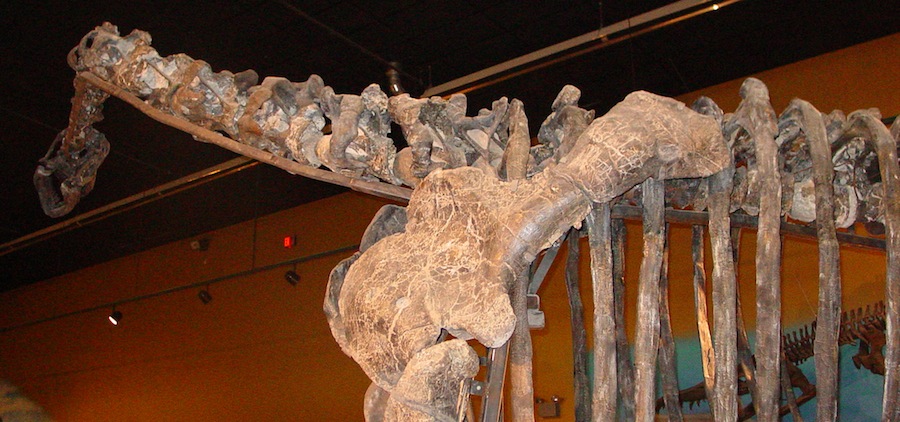
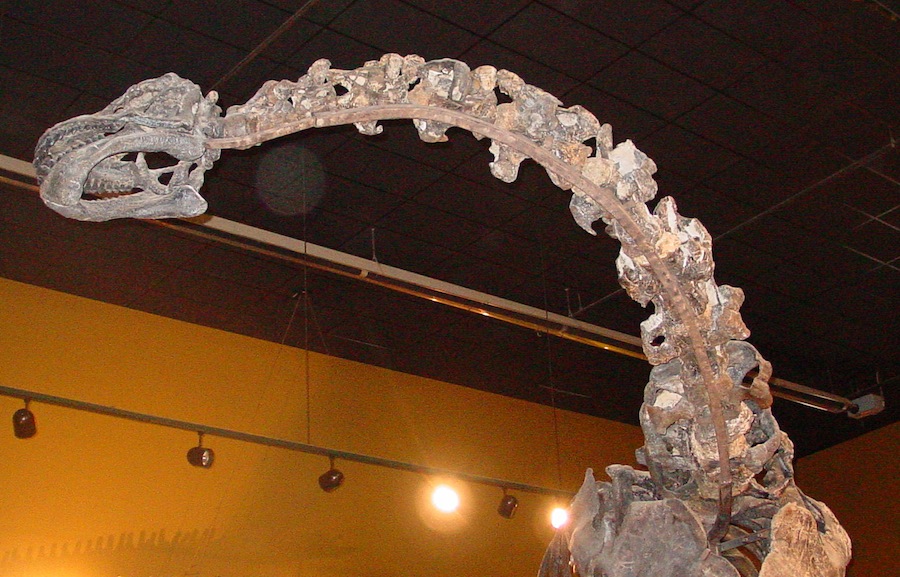
| A composite specimen of Camarasarus. By necessity, the vertebrae are not in tight articulation; the central condyles of the centra are disarticulated from their associated cotyles (as is often the case when mounting original material). The result is a neck that is exploded axially, i.e., a bit longer than it would have been with the vertebrae in the tighter articulation they would have had in life. Nonetheless,it is clear that the neck emerges straight off of the back of this huge beast; no giraffe-like keystone shape is apparent in teh vertebrae at the base of the neck. Photographs courtesy Matthew Bonnan. This specimen has been remounted, with an attempt to better associate material from a single individual. |
 |
 |
| The following images show that the vertebrae, if placed in the closer state of articulation they would have held in life (with zygapophyses centered post- above pre, and the condyle inserted within cotyle), would have been naturally less elevated. Note that the zygapophyses are closer to articulation than the condyles, implying that geater slack needs to be taken up between centra than zygapophyses, reducing the curve of the axial skeleton further from that as mounted. As in all other instances we know of, the vertebrae at the base of the neck form a linear and roughly horizontal extension of the back, not in the least resembling that of a giraffe. |
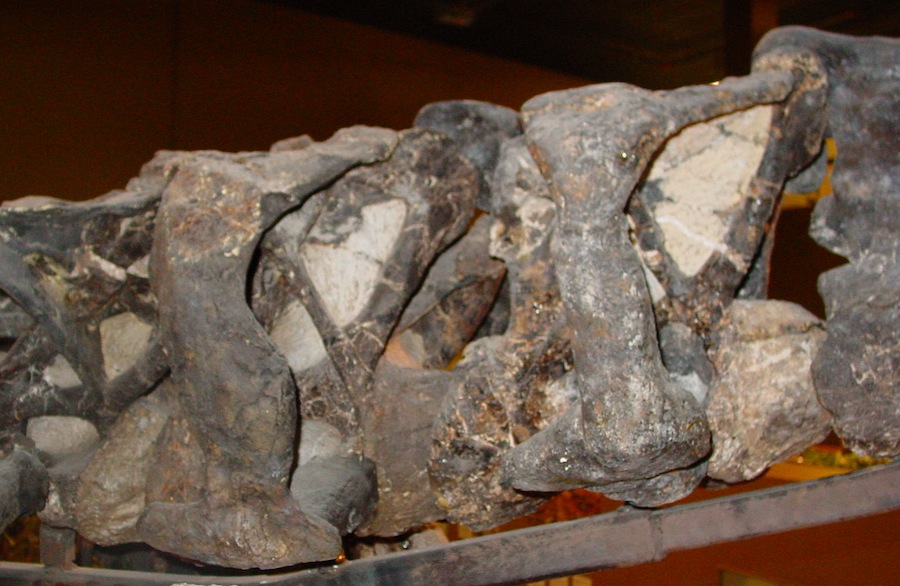 |
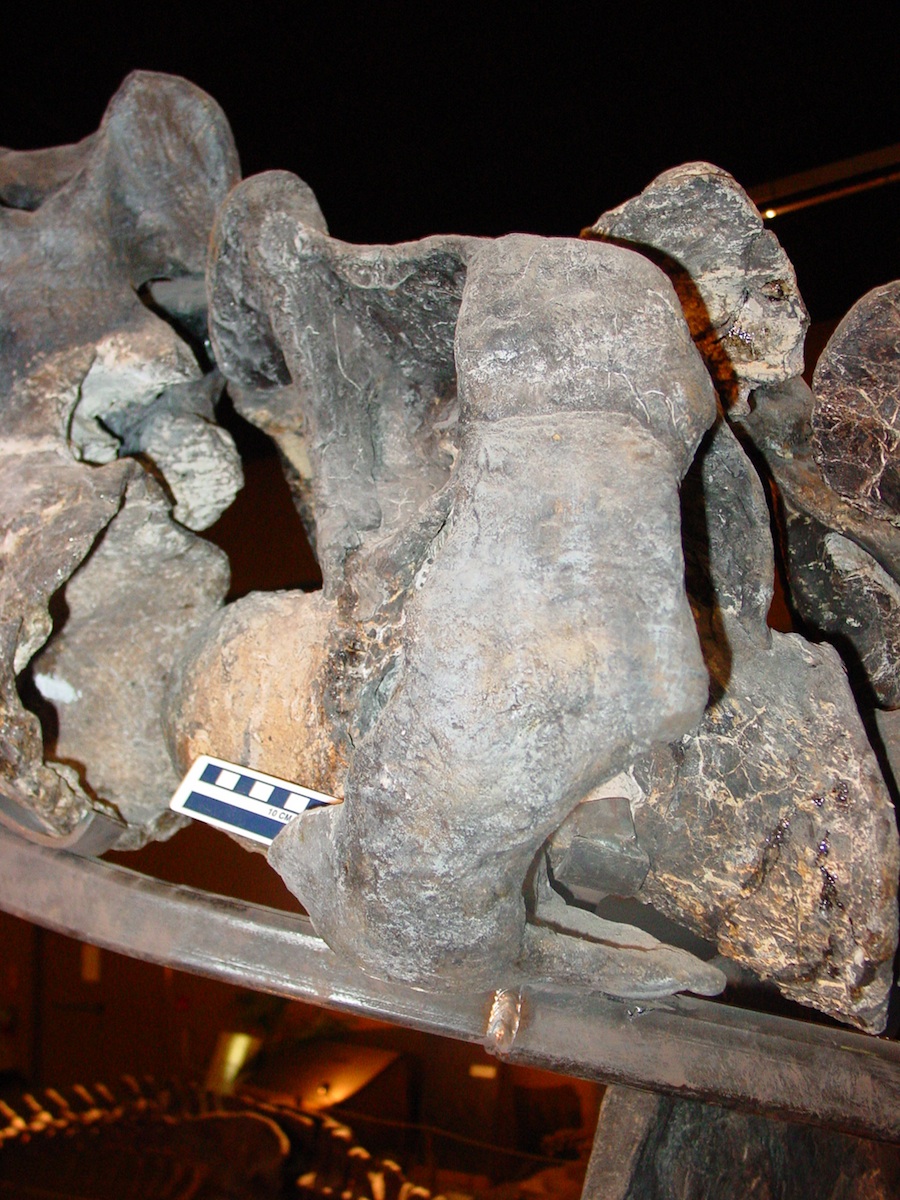 |
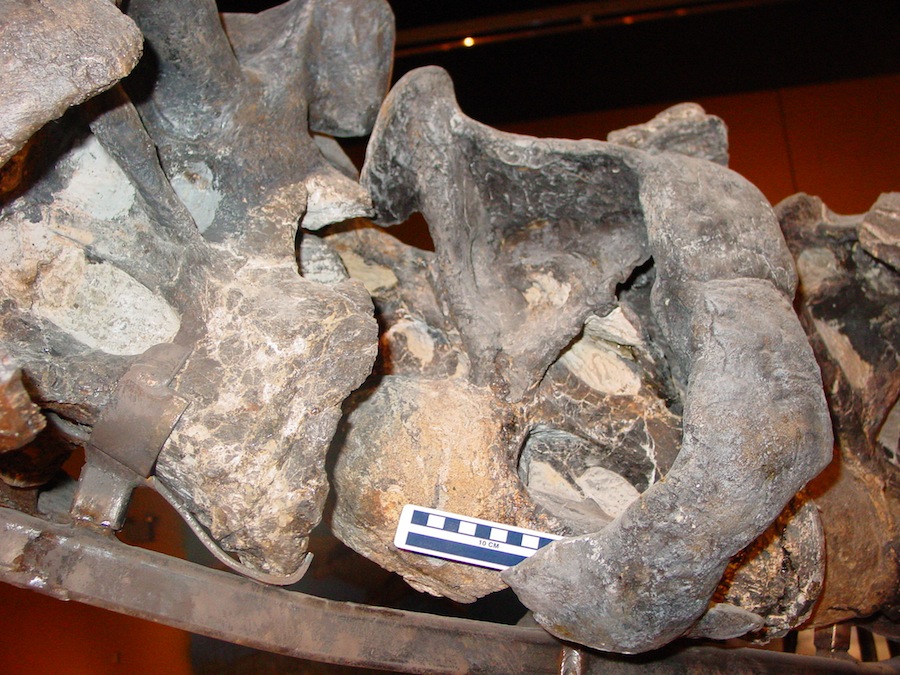 |
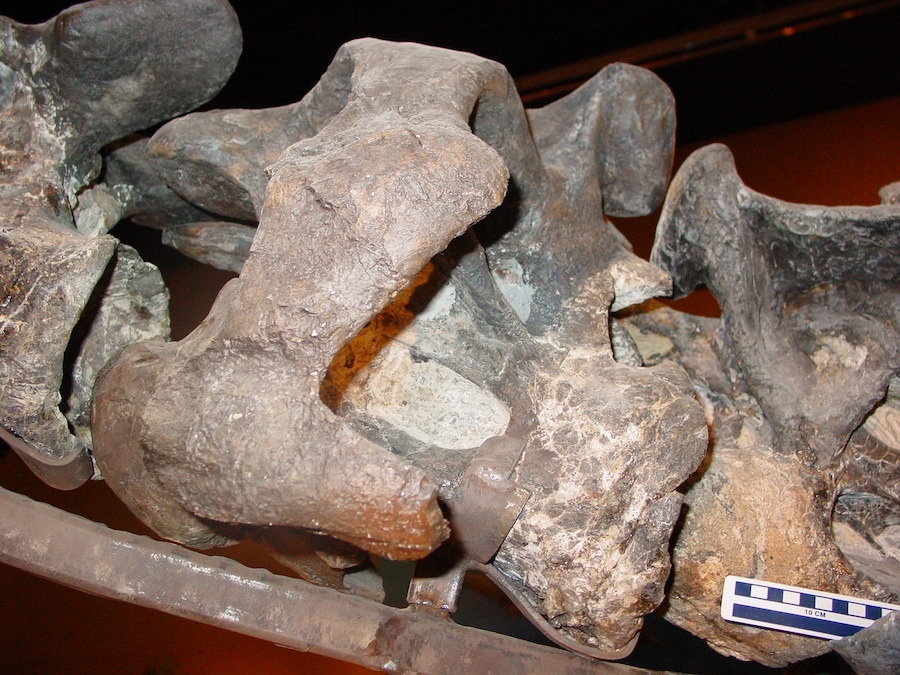 |
Copyright © 2011 Kent A. Stevens, University of Oregon